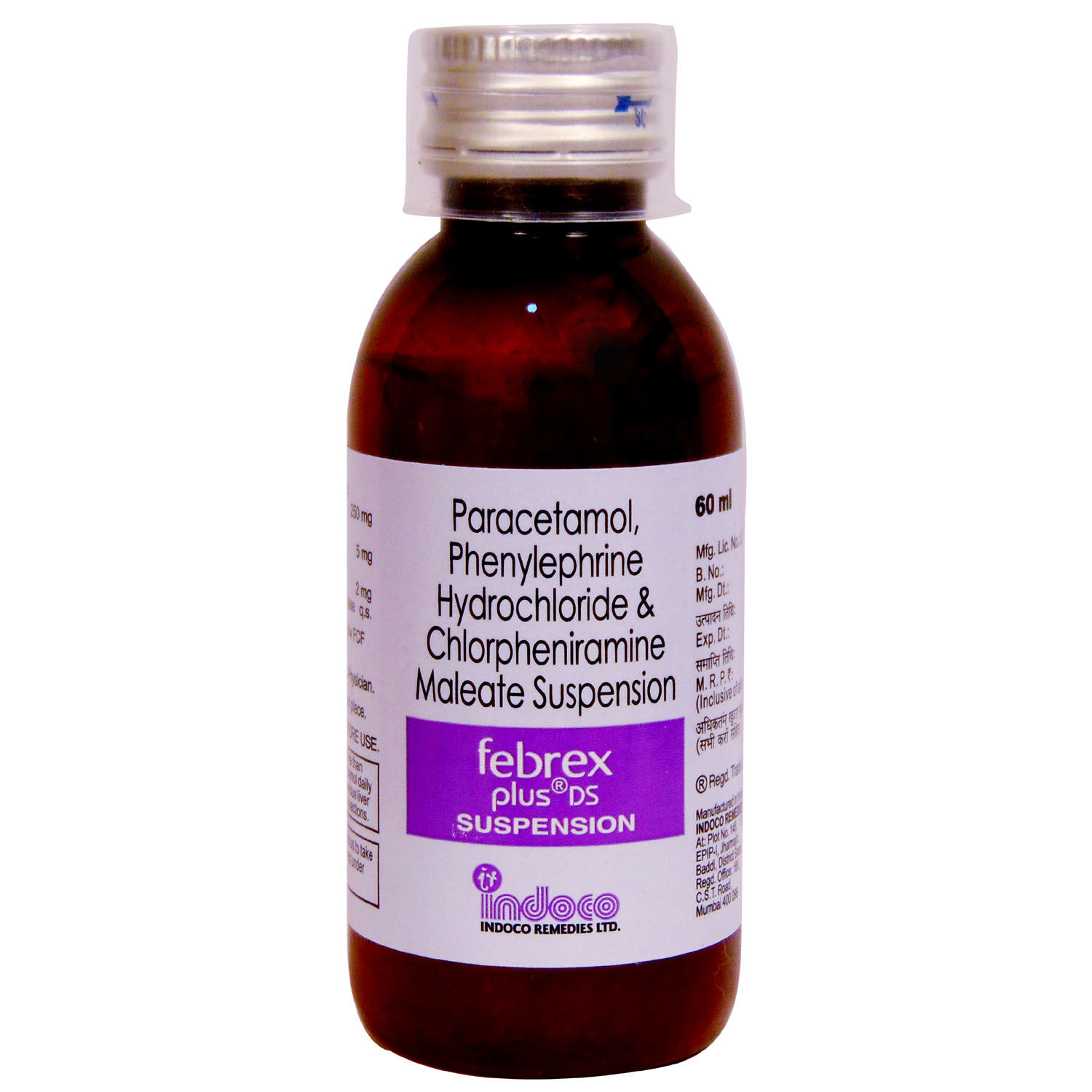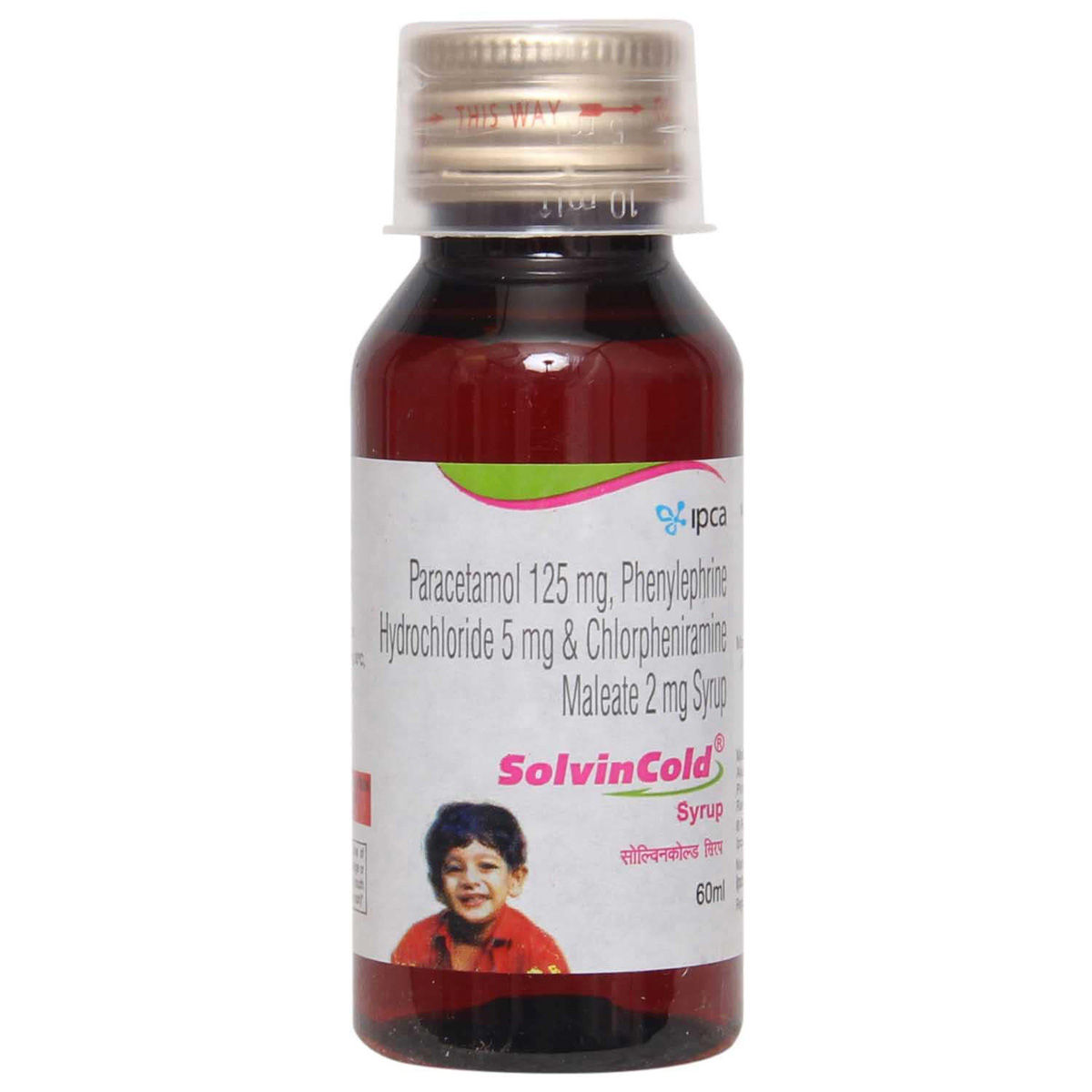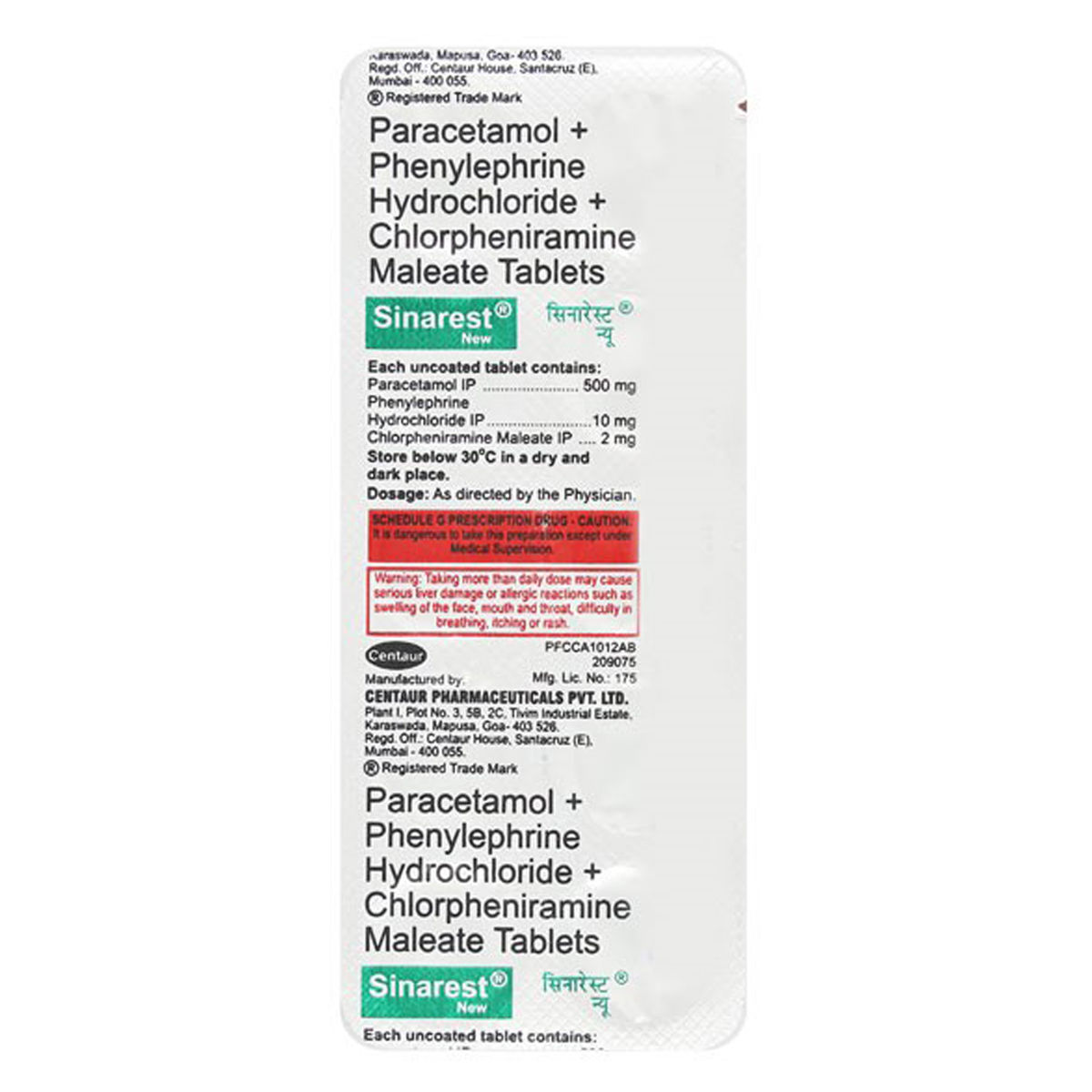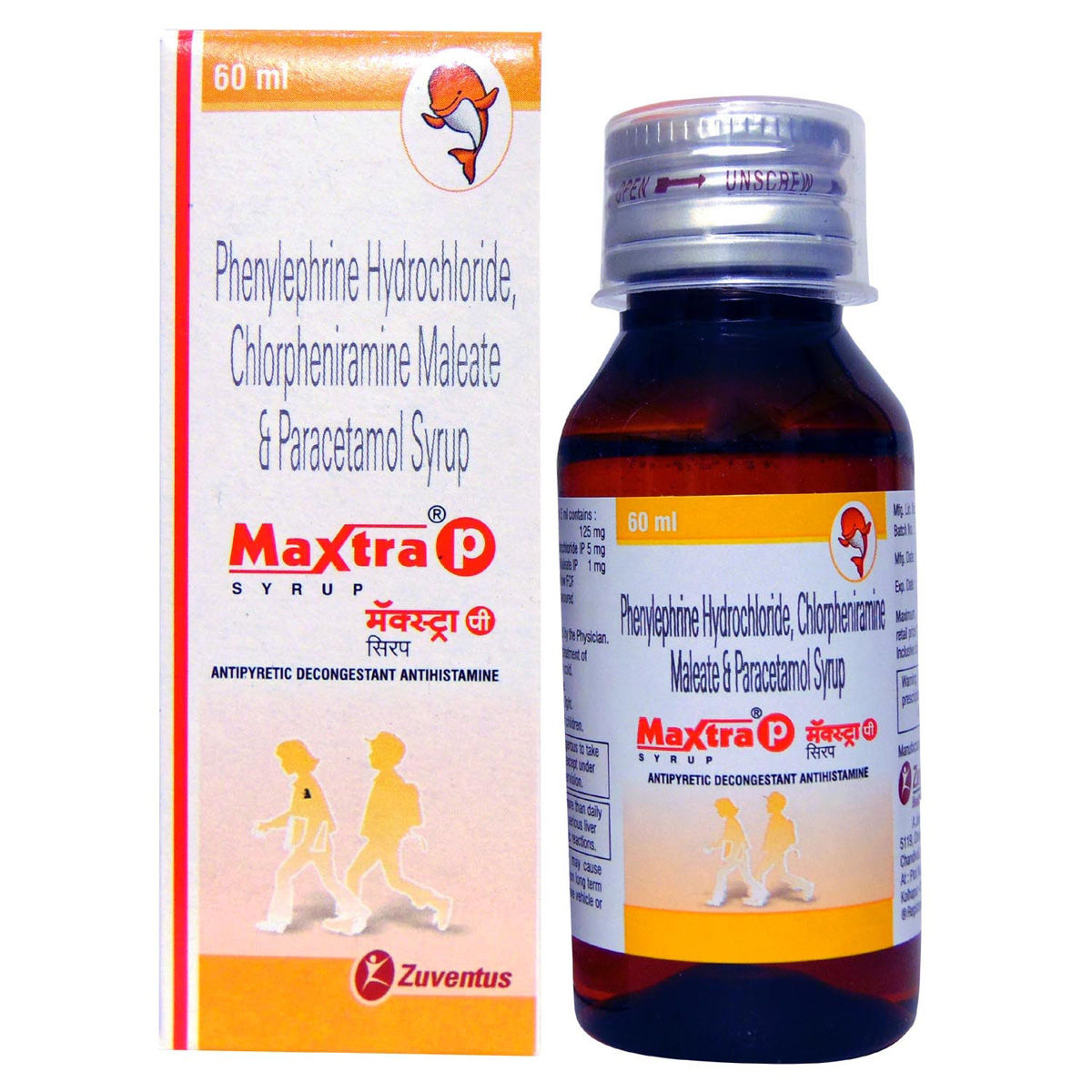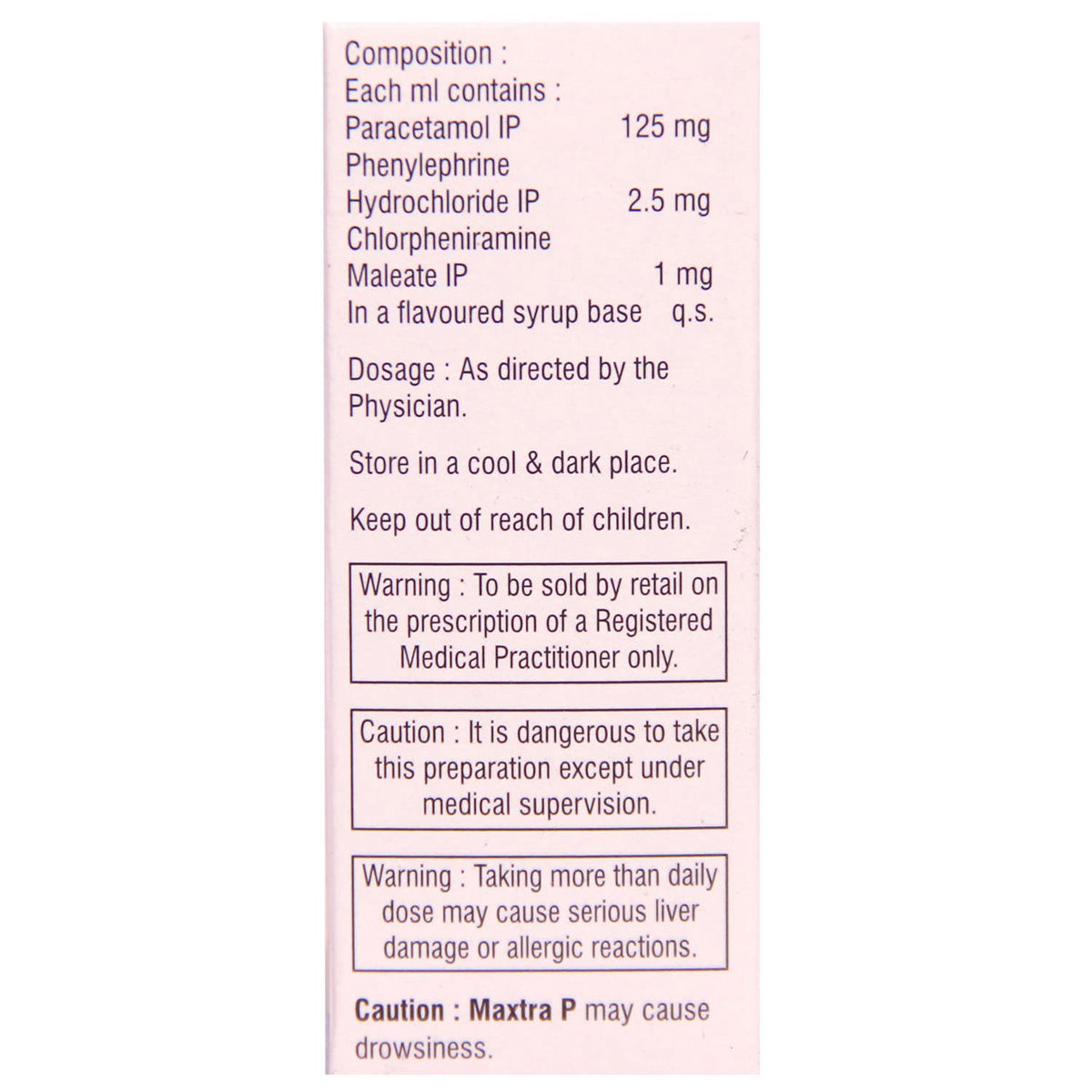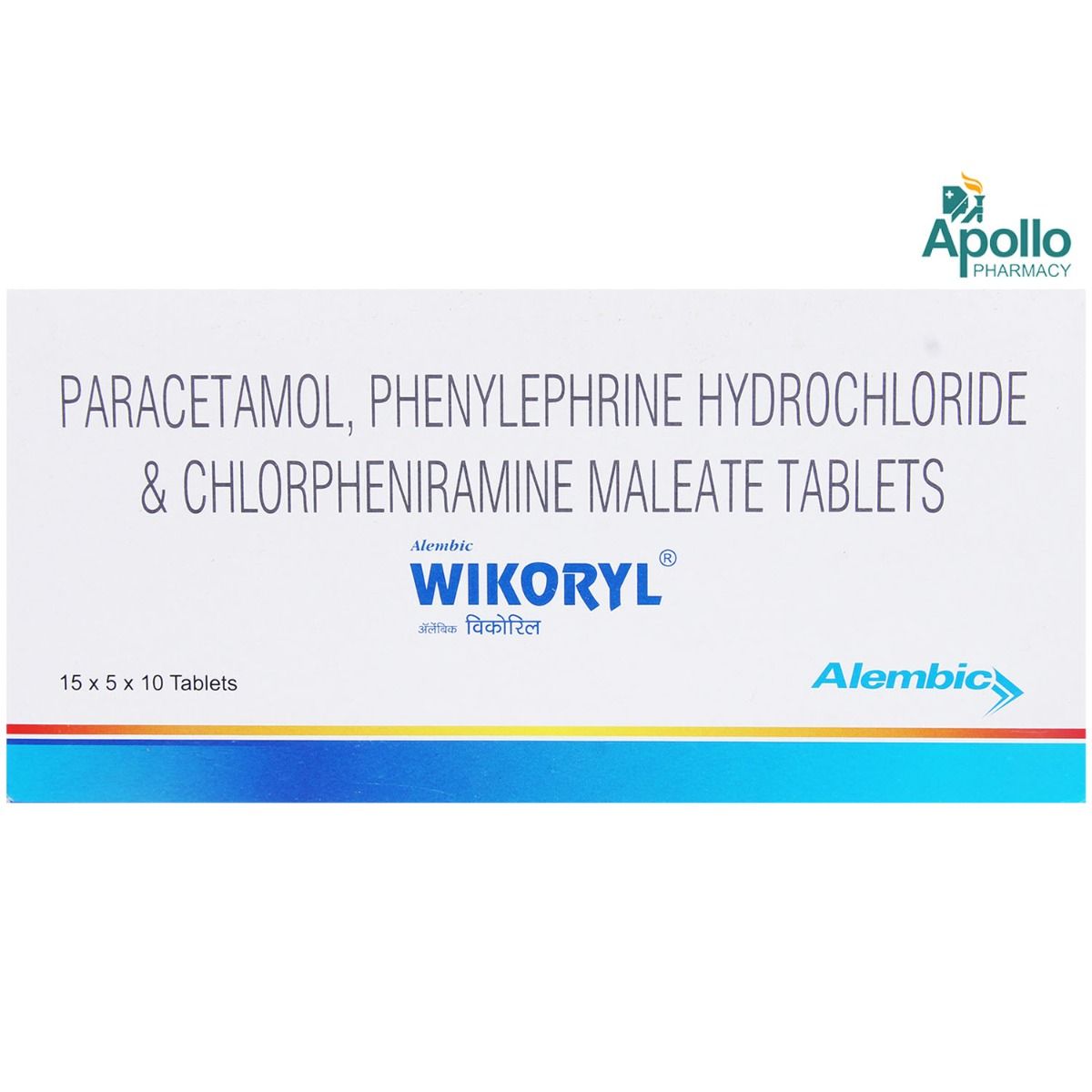PARACETAMOL+PHENYLEPHRINE HYDROCHLORIDE+CHLORPHENIRAMINE MALEATE
About PARACETAMOL+PHENYLEPHRINE HYDROCHLORIDE+CHLORPHENIRAMINE MALEATE
PARACETAMOL+PHENYLEPHRINE HYDROCHLORIDE+CHLORPHENIRAMINE MALEATE belongs to the class of medication called 'cough and cold medications' primarily used to treat symptoms of the common cold and allergies like sneezing, runny/stuffy nose, fever, headache, body pains, congestion, or watery eyes. The common cold is a respiratory illness affecting the nose and throat. It is mostly caused by viruses known as 'rhinovirus'. The virus enters the body through the nose, mouth, or eyes and spreads easily through droplets in the air when the person who is sick sneezes, coughs, or talks.
PARACETAMOL+PHENYLEPHRINE HYDROCHLORIDE+CHLORPHENIRAMINE MALEATE is a combination of three drugs, namely: Paracetamol (mild analgesic and antipyretic), Phenylephrine hydrochloride (decongestant), and Chlorpheniramine maleate (antihistamine/antiallergic). Paracetamol works by inhibiting the production of certain chemical messengers in the brain known as prostaglandins responsible for pain and fever. Phenylephrine hydrochloride works by shrinking the blood vessels in the nasal passage. Thereby providing relief from congestion and decreasing excess mucus production. Chlorpheniramine maleate works by blocking the action of histamine, a substance responsible for causing allergic reactions. It helps to provide relief from symptoms of allergy.
Take PARACETAMOL+PHENYLEPHRINE HYDROCHLORIDE+CHLORPHENIRAMINE MALEATE as prescribed. Your doctor will recommend how often you need to take PARACETAMOL+PHENYLEPHRINE HYDROCHLORIDE+CHLORPHENIRAMINE MALEATE based on your medical condition. Some people may experience drowsiness, nervousness, headache, dizziness, insomnia (difficulty falling or staying asleep), blurred vision, constipation, and dry mouth. Most of these side effects of PARACETAMOL+PHENYLEPHRINE HYDROCHLORIDE+CHLORPHENIRAMINE MALEATE do not require medical attention and gradually resolve over time. However, if the side effects persist or worsen, please consult your doctor.
If you are allergic to PARACETAMOL+PHENYLEPHRINE HYDROCHLORIDE+CHLORPHENIRAMINE MALEATE or any other medicines, please tell your doctor. If you are pregnant, it is advised to inform your doctor before using PARACETAMOL+PHENYLEPHRINE HYDROCHLORIDE+CHLORPHENIRAMINE MALEATE. Do not use PARACETAMOL+PHENYLEPHRINE HYDROCHLORIDE+CHLORPHENIRAMINE MALEATE if you are breastfeeding without a doctor’s advice, as it may be excreted in breast milk and cause harm to the baby. PARACETAMOL+PHENYLEPHRINE HYDROCHLORIDE+CHLORPHENIRAMINE MALEATE is not recommended for children below 4 years. Please do not take more than the prescribed dose of PARACETAMOL+PHENYLEPHRINE HYDROCHLORIDE+CHLORPHENIRAMINE MALEATE as it may cause liver damage.
Uses of PARACETAMOL+PHENYLEPHRINE HYDROCHLORIDE+CHLORPHENIRAMINE MALEATE
Medicinal Benefits
PARACETAMOL+PHENYLEPHRINE HYDROCHLORIDE+CHLORPHENIRAMINE MALEATE contains Paracetamol, Phenylephrine hydrochloride, and Chlorpheniramine maleate. Paracetamol is a mild analgesic (relieves pain) and antipyretic (reduces fever) that works by inhibiting the production of certain chemical messengers in the brain known as prostaglandins that are responsible for pain and fever. Phenylephrine hydrochloride is a decongestant that works by contracting and narrowing the blood vessels. Thereby, providing relief from congestion and decreasing mucus production. Chlorpheniramine maleate is an antihistamine (anti-allergic drug) that works by blocking the action of histamine, a substance responsible for causing allergic reactions. It helps to provide relief from symptoms of allergy such as sneezing, running nose, watery eyes, itching, swelling, and congestion or stiffness.
Directions for Use
Storage
Side Effects of PARACETAMOL+PHENYLEPHRINE HYDROCHLORIDE+CHLORPHENIRAMINE MALEATE
- Drowsiness
- Nervousness
- Headache
- Dizziness
- Insomnia (difficulty in falling or staying asleep)
- Blurred vision
- Constipation
- Dry mouth
Patients Concern
Disease/Condition Glossary
Common cold: The common cold is an infection caused by the virus, mainly known as ‘rhinoviruses’ affecting the nose and throat (upper respiratory tract). Children younger than 6 years are at the most significant risk of colds, but healthy adults can also be affected to have 2-3 colds annually. In most cases, cold symptoms are recovered within a week or ten days. However, symptoms might last longer in people who smoke or are exposed to allergens like pollutants, dust, etc. The symptoms of the common cold include sneezing, sore throat, cough, congestion, mild body pains, low fever, mild headache, feeling unwell, stuffy, or runny nose. In some cases, the discharge from the nose may become thicker and yellow or green, which is not an indication of bacterial infection.
Allergies: It occurs when allergy-causing agents (allergens) attack and invades our body thereby causing the release of histamines. This chemical messenger 'histamine' causes swelling, inflammation, redness, itchiness, itchy/watery nose, and watery eyes. Allergies generally occur due to chemicals, air pollution, pet danders, dust, pollen hairs, seasonal allergies like hay fever, etc.
FAQs
PARACETAMOL+PHENYLEPHRINE HYDROCHLORIDE+CHLORPHENIRAMINE MALEATE contains Paracetamol, Phenylephrine hydrochloride, and Chlorpheniramine maleate. Paracetamol works by inhibiting the production of certain chemical messengers in the brain known as prostaglandins that are responsible for pain and fever. Phenylephrine hydrochloride works by contracting and narrowing the blood vessels. Thereby, providing relief from congestion and decreasing mucus production. Chlorpheniramine maleate works by blocking the action of histamine, a substance responsible for causing allergic reactions.
PARACETAMOL+PHENYLEPHRINE HYDROCHLORIDE+CHLORPHENIRAMINE MALEATE contains paracetamol which acts as a mild pain killer (analgesic) and fever reducer (antipyretic). It works by inhibiting the production of certain chemical messengers in the brain known as prostaglandins responsible for pain and fever.
PARACETAMOL+PHENYLEPHRINE HYDROCHLORIDE+CHLORPHENIRAMINE MALEATE may cause drowsiness. It is not necessary for everyone taking PARACETAMOL+PHENYLEPHRINE HYDROCHLORIDE+CHLORPHENIRAMINE MALEATE to experience this side effect. Therefore, avoid driving or operating heavy machinery if you feel drowsy after taking PARACETAMOL+PHENYLEPHRINE HYDROCHLORIDE+CHLORPHENIRAMINE MALEATE.
You are not recommended to take PARACETAMOL+PHENYLEPHRINE HYDROCHLORIDE+CHLORPHENIRAMINE MALEATE with Cetirizine as co-administration of these two medicines may increase sedation and can cause drowsiness, dizziness and difficulty in concentrating. However, please consult a doctor before taking PARACETAMOL+PHENYLEPHRINE HYDROCHLORIDE+CHLORPHENIRAMINE MALEATE with other medicines.
You are not recommended to stop taking PARACETAMOL+PHENYLEPHRINE HYDROCHLORIDE+CHLORPHENIRAMINE MALEATE without consulting your doctor as it may worsen the condition or cause recurring symptoms. Therefore, take PARACETAMOL+PHENYLEPHRINE HYDROCHLORIDE+CHLORPHENIRAMINE MALEATE for as long as your doctor has prescribed it, and if you experience any difficulty while taking PARACETAMOL+PHENYLEPHRINE HYDROCHLORIDE+CHLORPHENIRAMINE MALEATE, please consult your doctor.
Do not use PARACETAMOL+PHENYLEPHRINE HYDROCHLORIDE+CHLORPHENIRAMINE MALEATE if you have used an MAO inhibitor in the past 14 days, like isocarboxazid, linezolid, phenelzine, rasagiline, selegiline, or tranylcypromine. Tell your doctor before taking PARACETAMOL+PHENYLEPHRINE HYDROCHLORIDE+CHLORPHENIRAMINE MALEATE if you have nausea, stomach pain, itchy skin, loss of appetite, dark urine, clay-coloured stools, or jaundice (yellowing of your skin or eyes). In rare cases, paracetamol present in PARACETAMOL+PHENYLEPHRINE HYDROCHLORIDE+CHLORPHENIRAMINE MALEATE may cause a severe skin allergic reaction. So, if you observe any skin blisters or redness or rash, stop taking PARACETAMOL+PHENYLEPHRINE HYDROCHLORIDE+CHLORPHENIRAMINE MALEATE and contact your doctor.
Available Medicines for
PARACETAMOL+PHENYLEPHRINE HYDROCHLORIDE+CHLORPHENIRAMINE MALEATE

